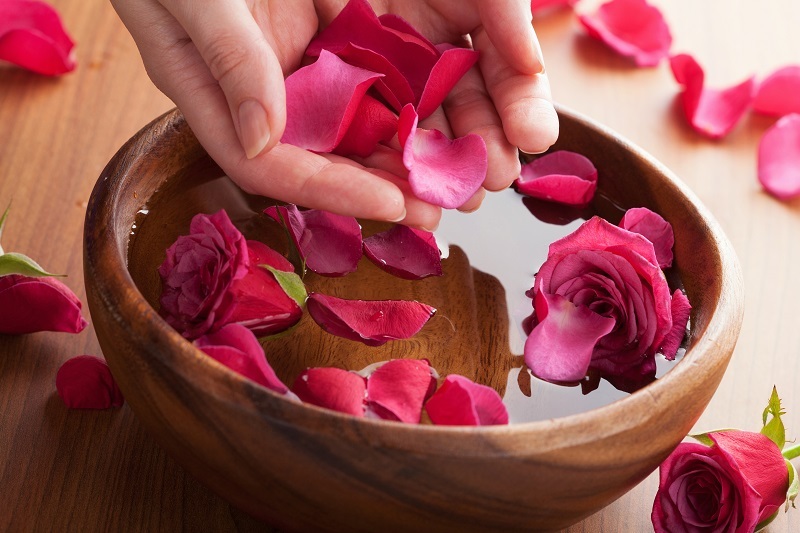Mastering the Art of Orchid Care
Posted on 03/06/2025
Mastering the Art of Orchid Care: A Complete Guide for Enthusiasts
Orchids have long fascinated plant lovers with their vibrant blooms, delicate structure, and remarkable diversity. Whether you're a beginner or a seasoned grower, mastering the art of orchid care can transform your indoor spaces and elevate your horticultural skills. This comprehensive article will walk you through the essential aspects of orchid plant care so you can enjoy healthy, thriving blooms year-round.

Understanding Orchids: The Basics
Orchids are among the largest and most diverse plant families in the world, with over 25,000 species and countless hybrids. Their unique aesthetic and adaptability make them popular among hobbyists and professionals alike. However, caring for orchids requires attention to their specific needs regarding light, water, humidity, and nutrition.
- Family: Orchidaceae
- Common Types: Phalaenopsis (Moth Orchid), Dendrobium, Cattleya, Oncidium, Vanda
- Growth habit: Epiphytic, lithophytic, or terrestrial
Why Orchids Are Unique
Orchids are distinct from other flowering plants because of their:
- Sticky pollen packets (pollinia)
- Modified roots for air absorption
- Resilience in diverse environments
Understanding these distinct features is the first step in successful orchid care.
Orchid Care Essentials: Key Factors
1. Choosing the Right Orchid
There are orchids for every level of expertise. If you're new to cultivating these beautiful plants, start with Phalaenopsis (Moth Orchids). They're forgiving and thrive in typical home conditions. Cattleya and Dendrobium are also popular for their manageable care requirements.
Tip: Research the specific needs of your chosen variety; what works for one may not suit another!
2. Light: The Foundation of Healthy Growth
Light is perhaps the most important factor for orchid health. Most orchids need bright, indirect light to produce lush leaves and vivid flowers.
Light Guidelines:
- Phalaenopsis: Thrives in filtered, indirect sunlight. East or north-facing windows are ideal.
- Cattleya: Prefers more intense light; a south-facing window with sheer curtains often works best.
- Dendrobium: Enjoys bright but not harsh light.
Warning: Avoid exposing orchids to direct afternoon sun, as this may scorch their delicate leaves.
3. Watering: Striking the Right Balance
Proper watering is at the heart of orchid plant care. Unlike many houseplants, orchids are susceptible to root rot if overwatered. Understanding their natural environment is key, as many are epiphytes, accustomed to brief rains followed by periods of drying out.
- Watering Schedule: Water once a week in cooler months, twice weekly during summer.
- Technique: Water thoroughly, allowing excess to drain completely.
- Never let the pot stand in water.
- Use tepid, distilled, or rainwater for best results.
Pro Tip: It's better to underwater than overwater!
4. Humidity & Temperature: Simulating Natural Conditions
Orchids hail from humid, tropical environments, so it's crucial to provide enough moisture in the air. Most varieties flourish in relative humidity of 40-60% and daytime temperatures of 65-80?F (18-27?C). Night temperatures should drop by about 10?F (5?C) to mimic natural cycles.
- Place a humidifier or tray of water and pebbles near your orchids.
- Increase air circulation to prevent fungal issues.
- Temperature fluctuations mimic outdoor environments and encourage blooming.
5. Potting Mix and Containers
Orchids need special substrates. Typical soil retains too much water and suffocates roots. Instead, select a well-draining orchid mix consisting of:
- Bark chips
- Sphagnum moss
- Perlite
- Charcoal
Repot orchids every 1-2 years or when the potting mix breaks down. Use clear or slatted pots to allow roots access to light and air--crucial for healthy growth.
6. Feeding: Fertilizer for Robust Orchids
Feeding your orchids is simple but essential for consistent blooming. Use a balanced fertilizer (20-20-20), diluted to one-quarter strength, every other week during active growth. Always water orchids before fertilizing to avoid root burn.
- Flush with water monthly to prevent salt build-up.
Orchid Propagation: Growing Your Collection
Division
This method is suitable for mature, sympodial orchids (like Cattleya and Dendrobium). When repotting, gently separate roots into clumps, ensuring each division has several pseudobulbs and roots. Repot as described above.
Keiki (Offshoots)
Some orchids, such as Phalaenopsis, produce baby plants called keikis. When the keiki has roots at least 2-3 inches long, you can gently remove and pot it separately.
Seasonal Orchid Care Tips
Spring & Summer
- Increase watering as days get warmer and longer.
- Boost humidity to combat dry indoor air.
- Watch for pests such as aphids and spider mites.
- Promote flowering with proper feeding and light.
Autumn & Winter
- Reduce watering as growth slows.
- Place orchids away from cold drafts and heat sources.
- Provide extra light if natural sunlight is diminished.
- Monitor for signs of rot or mold due to cooler temperatures.
Troubleshooting Orchid Problems
Common Pests
- Mealybugs: Remove with alcohol-soaked cotton swabs.
- Spider mites: Prevent with increased humidity and regular misting.
- Scale insects: Scrape gently and treat with insecticidal soap.
Disease & Root Rot
Most orchid diseases result from excessive moisture and poor air circulation. If leaves turn yellow or roots appear brown and mushy, remove affected areas with sterile scissors and repot in fresh substrate.
Lack of Blooms
If your orchid won't flower, reassess its care:
- Insufficient light: Move to a brighter (indirect) location.
- Improper temperature: Ensure night-time drop in temperature.
- Nutrient deficiency: Adopt a regular but balanced feeding schedule.
Tips for Thriving Orchids: Going Beyond the Basics
- Keep a care journal: Track watering, feeding, and bloom cycles for each orchid.
- Observe closely: Orchids communicate distress with spots, wilting, or leaf drop--address issues promptly.
- Prioritize cleanliness: Sterilize tools and remove dead leaves to prevent disease.
- Rotate your plants: Help leaves grow evenly and receive sufficient light.
- Use supports: Train spikes (flower stems) to grow upright using stakes and clips.

Frequently Asked Questions (FAQ) about Orchid Care
How often should you water your orchid?
This depends on your orchid's type, local climate, and container. Generally, water when the potting medium feels dry about an inch below the surface. Never let them sit in stagnant water!
Should I prune orchid roots?
Healthy roots should remain intact, even if exposed above the pot. Only trim dead or mushy roots during repotting.
How can I encourage reblooming?
After flowering, continue regular care. For Phalaenopsis, trim the spike to a node below the spent blooms--sometimes a new spike will emerge. Ensure:
- Sufficient light
- Regular feeding
- Proper day-night temperature swings
Can orchids grow outdoors?
In climates with warm temperatures and high humidity, some orchid types can flourish outdoors. Protect from direct midday sun and extremes of cold or wind.
Transform Your Home with Masterful Orchid Care
With the right techniques and knowledge, mastering the art of orchid care is within reach for anyone. From understanding the unique needs of your orchids to providing the correct environment, feeding, and troubleshooting, these vibrant plants can reward you with breathtaking flowers and years of enjoyment.
Take the time to observe, experiment, and care for your orchids, and soon you'll be a true orchid expert. The journey from novice to seasoned grower is as beautiful as the blooms themselves!
Ready to Begin Your Orchid Care Journey?
Gather your supplies, select the perfect orchid variety, and put your new knowledge into practice. With patience and passion, your home will soon overflow with healthy, blooming orchids--the true sign of mastered orchid care.
Happy growing and enjoy your orchid adventure!





